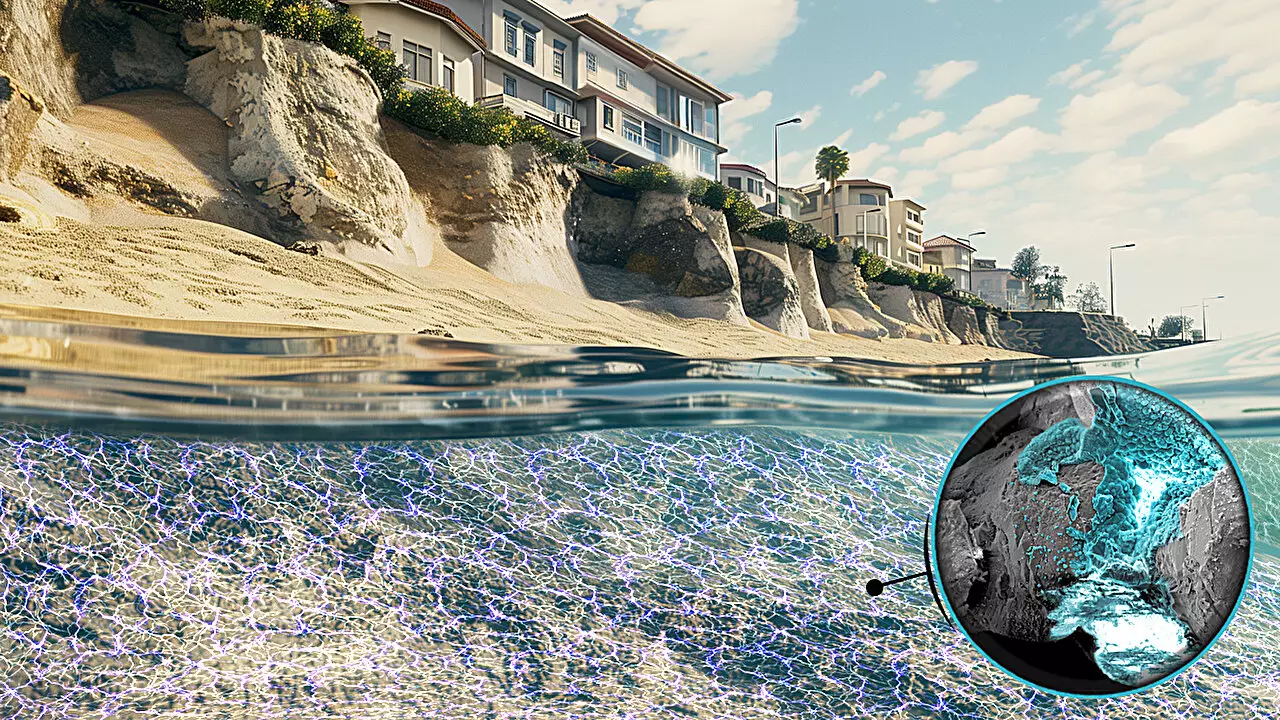In recent years, the devastating impacts of climate change have prompted a pressing need for innovative solutions to protect our coastlines. With increasing sea levels and the frequency of extreme weather events, coastal erosion poses a significant threat to both ecosystems and human settlements. Researchers at Northwestern University have spearheaded a pioneering study that demonstrates how mild electrical currents can fundamentally alter marine sands, reinforcing coastlines in a sustainable manner. This article delves into the study’s methodologies, findings, and implications for protecting coastal communities worldwide.
The study, led by Alessandro Rotta Loria, draws fascinating parallels to the natural world, specifically the mechanisms used by shellfish such as clams and mussels. These organisms utilize the dissolved minerals in seawater to create robust shells, thereby maintaining their defense against environmental stressors. Similarly, Rotta Loria and his team identified a way to exploit these naturally occurring minerals to develop a binding agent through the application of electrical energy instead of relying on metabolic processes. The researchers’ objective was clear: to find a sustainable and economically viable method to reinforce coastal areas without conventional construction barriers detrimental to the environment.
In their experiments, the team employed a low-voltage electrical current ranging from 2 to 4 volts to initiate chemical reactions within marine sands. This process converts dissolved minerals in seawater, primarily calcium carbonate and magnesium hydroxide, into solidified forms that serve as a binding agent. Remarkably, when subjected to this electrical stimulation, marine sand transforms into a durable, rock-like material that dwarfs regular sand in strength. Initial results were promising, as the treated sand exhibited properties akin to concrete, providing a much-needed alternative to traditional erosion mitigation methods.
Unlike existing techniques that often involve expensive sea walls or the injection of chemical binders, the new method presents cost-effective solutions. Rotta Loria’s calculations suggest that this innovative technique will cost a mere $3 to $6 per cubic meter compared to the $70 per cubic meter associated with conventional methods, significantly reducing the financial burden on vulnerable communities.
Sustainability is at the heart of this research, and Rotta Loria assures stakeholders that the method poses no harm to marine life. The electrical currents employed in the study are mild, ensuring that local ecosystems remain unscathed during treatment. Furthermore, this new technology is reversible—the same electrical process that cements sand can be undone, providing an option for communities to dismantle or alter treatments without long-term ecological consequences. This adaptability enhances the appeal of the technique, specifically for regions concerned about the longevity and environmental impact of traditional coastal protection strategies.
The potential applications for this technique are extensive. Aside from reinforced coastlines, researchers are eyeing various uses in urban infrastructure, such as the possible strengthening of cracked concrete structures commonly seen in shoreside buildings. This flexibility could drastically change how we view coastal resilience and urban planning moving forward.
Rotta Loria’s team plans to transition beyond laboratory testing to real-world trials on beaches, setting the stage for additional insights into the technique’s effectiveness. The findings could be instrumental not only for coastal protection but also for global applications in various ecosystems facing similar challenges due to climate change.
As the world’s population increasingly gravitates toward coastal areas, the ramifications of coastal erosion will only amplify. The research emerging from Northwestern University illuminates a promising pathway forward in mitigating these risks. By harnessing the power of electricity to cement marine sands, Rotta Loria’s study offers a viable, cost-effective solution aimed at bolstering coastal defenses against the relentless advance of climate change. A more robust shoreline could mean not only a protected environment but also safer communities, safeguarding the livelihoods and ecosystems dependent on these fragile coastal regions.


Leave a Reply